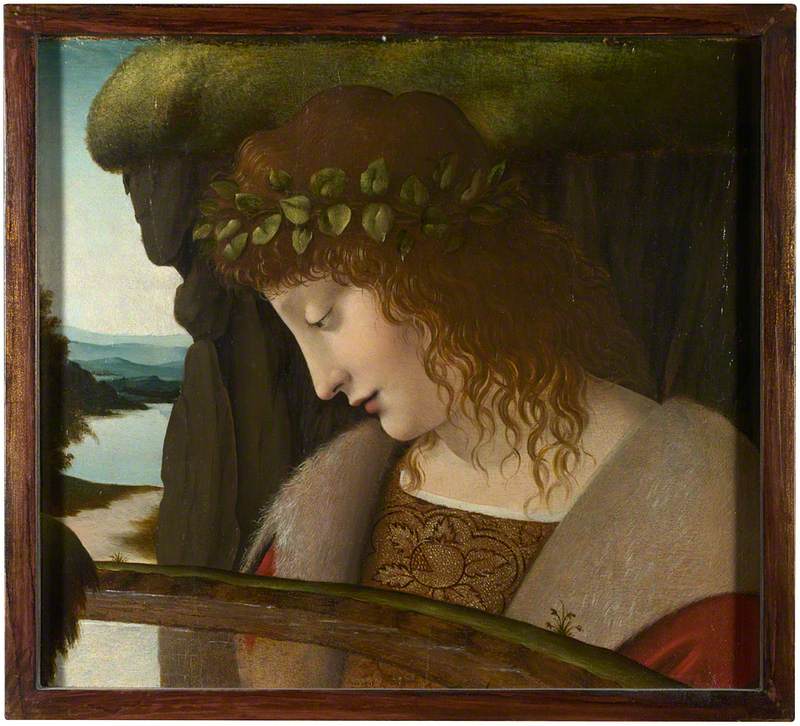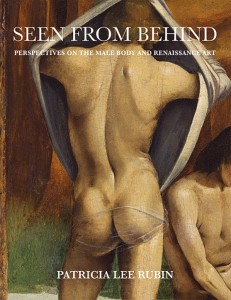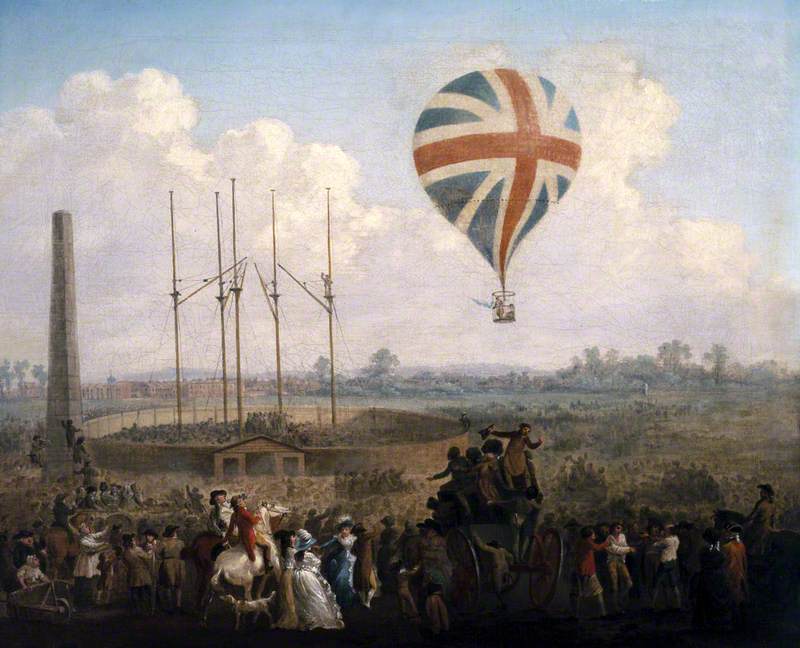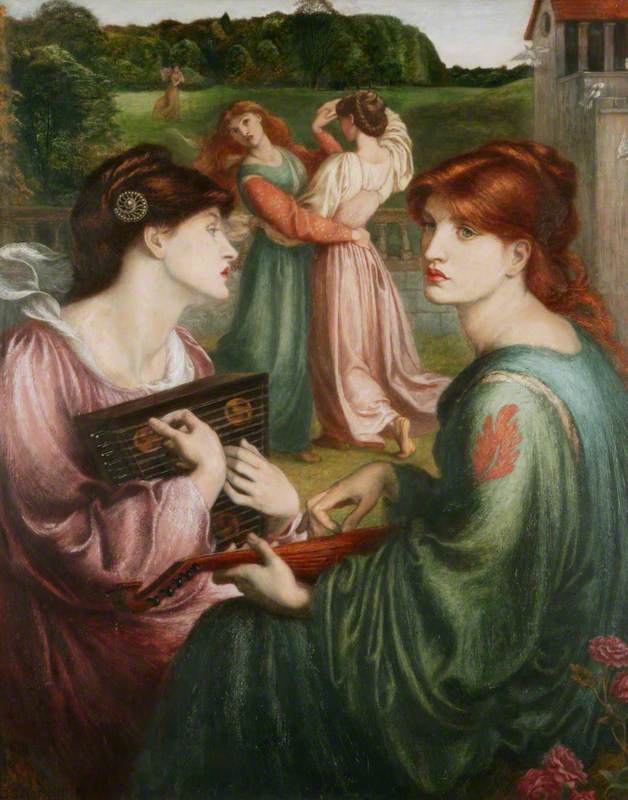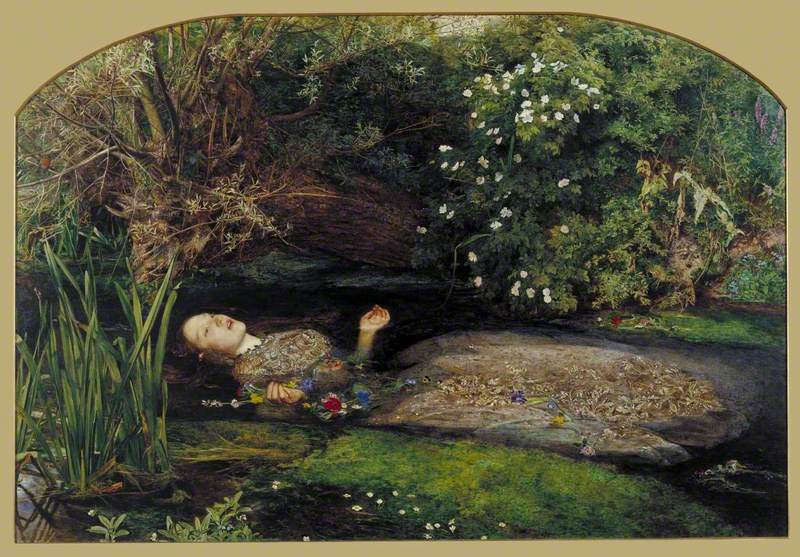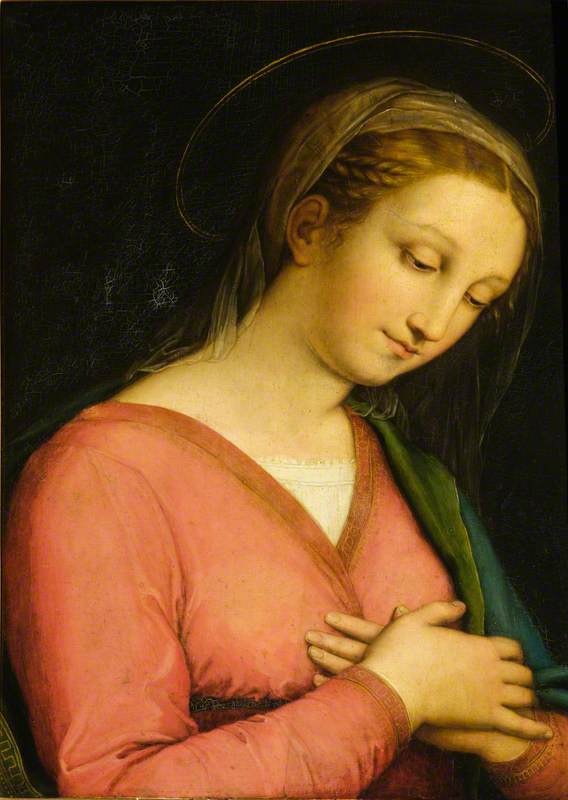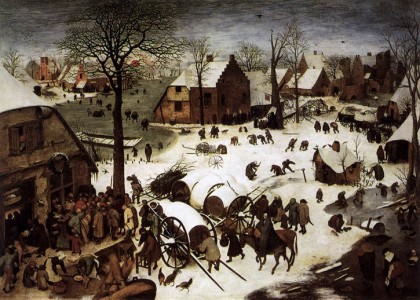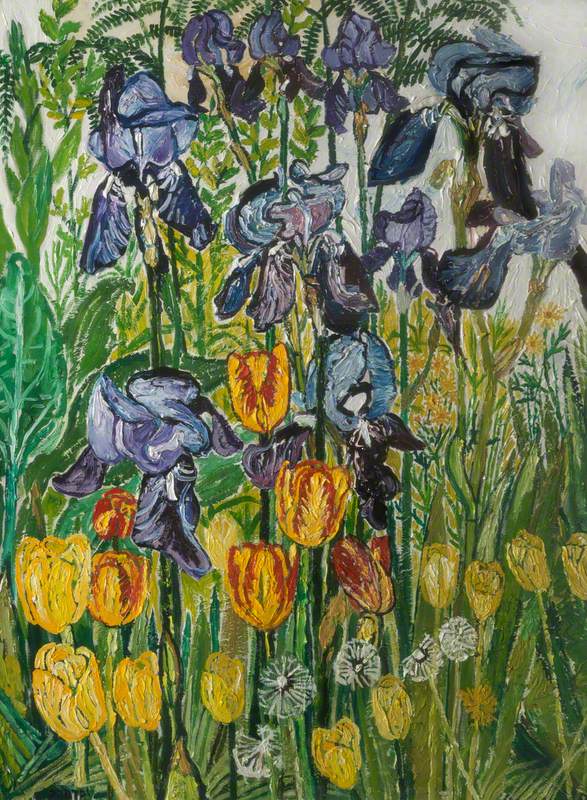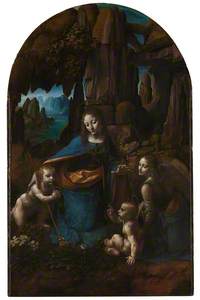2nd May 2019 marks 500 years since the death of artist, inventor and polymath Leonardo da Vinci (1452–1519).
Presumed self-portrait
c.1512, red chalk on paper drawing by Leonardo da Vinci (1452–1519) (attributed to) 
An enigmatic figure and archetypal 'Renaissance Man', Leonardo was not only a brilliant artist – the Mona Lisa (1503) is undeniably the most famous painting in the world – but also an inventor, an engineer and a restless procrastinator. While there is only a total of 15 artworks attributed directly to him, Leonardo left behind a staggering 5,000 pages of notes and drawings about a diverse range of subjects from art, natural philosophy and mechanical engineering to the study of motion and flight, geology and anatomy.
As we mark half a millennium since the death of Leonardo, here's a brief exploration of some of his key life moments and a celebration of his genius.
Childhood and apprenticeship
Born out of wedlock in 1452, he was the son of Messer Piero Fruosino di Antonio da Vinci, a Florentine notary, and a peasant girl called Caterina. Leonardo was raised in the Tuscan town of Vinci, outside Florence. As an illegitimate child, Leonardo was stigmatised and unable to receive a formal or prestigious education. Yet after showing signs of exceptional artistic talent, at the age of 14 he was sent to work in the studio of the highly regarded Florentine artist Andrea del Verrocchio.
The Virgin and Child with Two Angels
about 1467-9
Andrea del Verrocchio (1435–1488) 
Verrocchio was a renowned artist and engineer, whose studio taught some of the great Renaissance masters, like Ghirlandaio, Botticelli, Lorenzo di Credi and Perugino. Leonardo’s early notebooks show that he was clearly hardworking and ambitious, writing in his diary: 'Poor is the pupil that does not surpass his master'.
Becoming a skilled craftsman and artist
During his lifetime, Leonardo was known for pursuing many interests and occupations. Although he trained as an artist in the workshop of Verrocchio, it is important to acknowledge that to be an 'artist' in fifteenth-century Italy meant something quite different from what it means today. To be an artist was synonymous with being a highly skilled craftsman or artisan. Artists were involved in a number of other activities and weren’t solely restricted to painting. Verrocchio's apprentices would have learnt not only about painting, but sculpture, metalwork, architecture, music, optics and botany. Leonardo was reportedly also a talented musician, even inventing his own instruments.
An Angel in Green with a Vielle
about 1506
Leonardo da Vinci (1452–1519) (associate of) 
In 1472 at the age of 20, Leonardo became a qualified artist and member of the Compagnia di San Luca – the Florence Painters' Guild.
Baptism of Christ
c.1475, oil and tempera on wood panel by Andrea del Verrocchio (c.1435–1488) and Leonardo da Vinci (1452–1519) 
Around the same time, Leonardo was working on The Baptism of Christ (c.1475) with his teacher. This is the earliest known painting attributed to him. According to the sixteenth-century artist and biographer Giorgio Vasari (the 'father of art history'), Leonardo painted the angel on the left and part of the background. In Vasari's Lives of the Most Excellent Italian Painters, Sculptors and Architects (1550), he described Verrocchio's response to Leonardo's angel, which was apparently 'so superior to the rest of the work that Andrea resolved that he would never take up a brush again.'
A bust of a warrior in profile, wearing a winged helmet and armour bearing a lion on the breast
1475–1480, silverpoint drawing on prepared paper by Leonardo da Vinci (1452–1519) 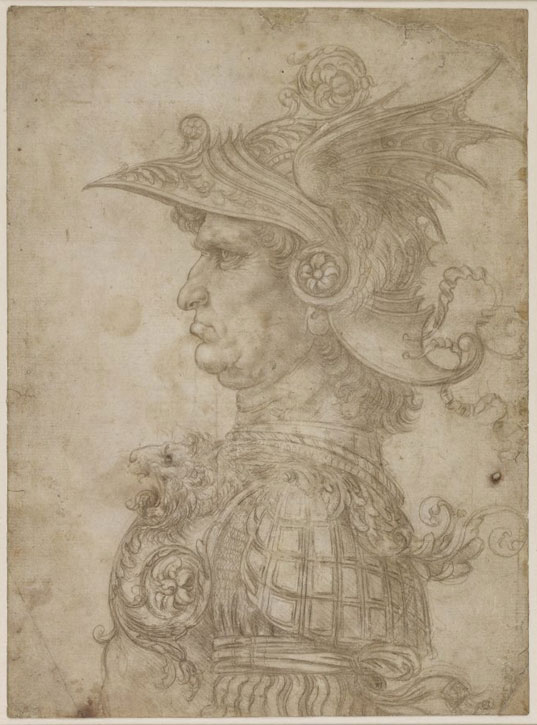
While in Verrocchio's studio, Leonardo created this silverpoint study (drawn using a stick of metal) showing a bust of a warrior in profile. Metalpoint was a popular medium during the early Renaissance and was often used to train young apprentice artists as it required patience to capture the intricate detail. Today this work can be found in the collection of the British Museum.
Court records dated 9th April 1476 reveal that Leonardo was arrested by the Florentine 'officers of the night' for alleged sodomy with a male prostitute. Homosexual acts were punishable by death in fifteenth-century Florence, usually by gruesome forms of public execution. Fortunately, the charges were dismissed, as there was a lack of evidence against Leonardo. However, the event significantly damaged his reputation and ultimately his career. Throughout history, many have speculated and presumed that Leonardo was gay.
In 1480, Leonardo painted Saint Jerome in the Wilderness, a masterpiece that was left unfinished. In 1481 he was commissioned to paint the Adoration of the Magi, also left unfinished. He allegedly abandoned the work when leaving Florence for Milan in 1482.
Move to Milan
In 1482, Leonardo left Florence – the cultural capital of northern Italy – for Milan. The Duke of Milan, Ludovico Sforza, would eventually become Leonardo's patron. Around this time, Leonardo turned his attention towards his notebooks, creating designs for military weapons. In 1483, his notebooks show that he sketched designs for a parachute, a giant crossbow, a scythed chariot and a prototype for a military tank.
In 1483, he received a commission to paint The Virgin of the Rocks by the Milanese Confraternity of the Immaculate Conception, along with two other painters, the brothers Ambrogio and Evangelista de Predis. From records of the contract, we know that the painting was intended to be at the centre of the Confraternity's sculpted and elaborate altarpiece. However, Leonardo and the brothers were involved in a dispute with the Confraternity, leading to a lawsuit that would result in the painting being left incomplete. Leonardo returned to it some years later. He also created a second version of the painting, which today can be seen in The National Gallery, London.
In 1485, he painted Lady with an Ermine, perhaps one of the most exquisite portraits in history. The sitter is Cecilia Gallerani, the mistress of Sforza.
In 1489, Leonardo turned his attention towards the study of anatomy. It is believed that over the course of his lifetime he dissected at least 30 corpses. The famous drawing, Vitruvian Man, created in around 1490, demonstrates Leonardo's fascination with the human body and the laws of nature, and his insatiable desire to understand the ideal human proportions. The drawing was inspired by the work of Roman architect Vitruvius.
Vitruvian Man
c.1490, Pen and ink with wash over metalpoint on paper by Leonardo da Vinci (1452–1519) 
The following year, he was commissioned to complete a bronze horse statue for Sforza, known as the Gran Cavallo – intended to be the largest equestrian statue in the world. Like many of Leonardo's projects, this one was also left unfinished. Most likely the project was disrupted because Milan was invaded by the French in 1499.
The Last Supper
(copy after Leonardo da Vinci) c.1520
Giampietrino (active 1500–1550) 
In Milan, Leonardo painted one of his most famous works, the mural The Last Supper which he completed between 1495 and 1498. His remarkable composition showing Jesus and the Twelve Apostles would be imitated by many artists over the following centuries. Thanks to the medium he used, and other environmental factors, much of the original has been destroyed.
In 1520, a year after the death of Leonardo, one of his followers Giampietrino painted a very impressive copy of the subject, which is housed in The Royal Academy of Arts. Like many of Leonardo's followers, Giampietrino would gain a reputation for imitating (some have said 'exploiting') the masterpieces of Leonardo, disseminating his style across Europe.
Leonardo remained in Milan until 1499.
The return to Florence
In 1500 Leonardo returned to Florence, at which point he had already started working on the Virgin and Child with Saint Anne, also known today as The Burlington House Cartoon (c.1499–1500). The painting shows the Virgin Mary sitting on the lap of her mother, Saint Anne. The Christ Child can be seen blessing his cousin Saint John the Baptist. Leonardo would spend around a decade working on this project. A cartoon (from the Italian cartone, meaning paper) was usually used by artists as a preparatory piece for a work, often a fresco.
The Virgin and Child with Saint Anne and the Infant Saint John the Baptist
(The Burlington House Cartoon), c.1499–1500, charcoal & chalk on paper, mounted on canvas by Leonardo da Vinci (1452–1519) 
It is believed that he also began working on his Salvator Mundi (c.1500) around this time.
In 1502 he began work as a military engineer for the Italian nobleman Cesare Borgia, creating designs for fortifications. A few years later, he began work on the mural in the Palazzo Vecchio, The Battle of Anghiari (also left unfinished).
Around the same time, he would also commence painting the Mona Lisa, which he initially left incomplete and finished some time later.
Mona Lisa
(before cutting down at sides) 18th C
Leonardo da Vinci (1452–1519) (after) 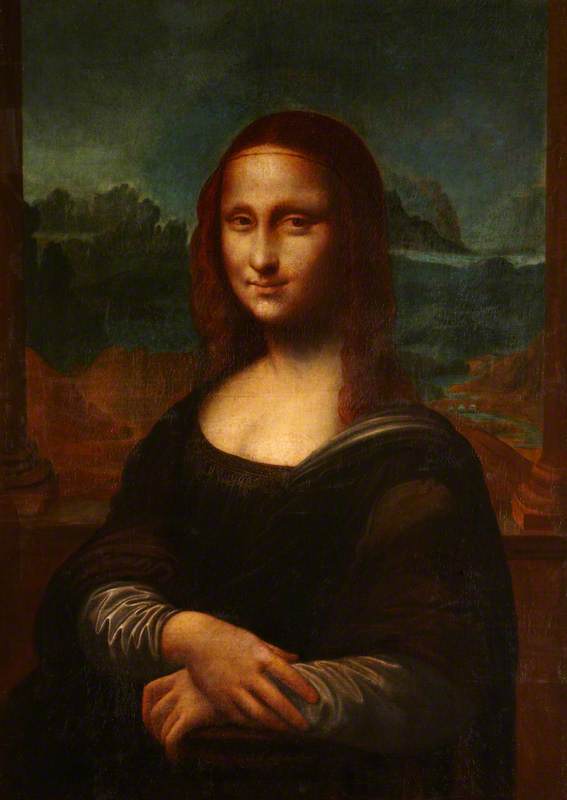
This copy of the Mona Lisa was created in the eighteenth century – before it had reached its current level of universal fame.
A move to Rome
Leonardo moved to Rome in 1513 and lived in the Vatican. Around this time, both Raphael and Michelangelo were also active in Rome. It is highly likely that Leonardo witnessed Michelangelo painting the Sistine Chapel frescoes. It is also likely that the two rival artists had painted side by side while working on commissions at the Palazzo Vecchio in Florence. According to Vasari, the competition between Michelangelo and Leonardo was fierce, with Leonardo writing in his notebook that Michelangelo's paintings were 'wooden'.
In 1515, Leonardo painted John The Baptist, now housed in the Musée du Louvre, Paris. A similar version created by one of Leonardo's studio assistants can be found at The Ashmolean Museum of Art and Archaeology in Oxford.
It is based on Leonardo's original composition in which the figure points upwards, indicating the Incarnation of Christ.
Final years in France
In October 1515, Francis I of France recaptured Milan. The same year, Leonardo permanently left Italy and moved to France to serve Francis I, living in the royal Château d'Amboise. There he spent the last years of his life, accompanied by his young friend and apprentice Francesco Melzi. During this time Francis became a close friend to Leonardo. Vasari wrote that the king was with the artist at the time of his death, allegedly holding his head in his arms. This legendary story was painted by a number of artists, including Ingres and Angelica Kauffmann.
Among his many copies of works by the Old Masters, Ingres created a copy of Leonardo's painting La Belle Ferronnière (1490–1496).
'La Belle Ferronnière'
(copy of a painting attributed to Leonardo da Vinci) c.1802–1806
Jean-Auguste-Dominique Ingres (1780–1867) 
Leonardo died of a presumed stroke on 2nd May 1519, aged 67.
Remembered as the most versatile and talented man in history, Leonardo proves that not all procrastinators are destined to fail!
Lydia Figes, Content Creator at Art UK
To celebrate 500 years since the death of Leonardo, The Royal Collection is showing a nationwide exhibition of Leonardo's graphic works, showing in 12 museums in different cities across the UK, including Belfast, Birmingham, Bristol, Cardiff, Glasgow, Leeds, Liverpool, Manchester, Sheffield, Southampton and Sunderland.
Here's a video of the opening celebrations of Leonardo's 500th anniversary at The National Gallery:
